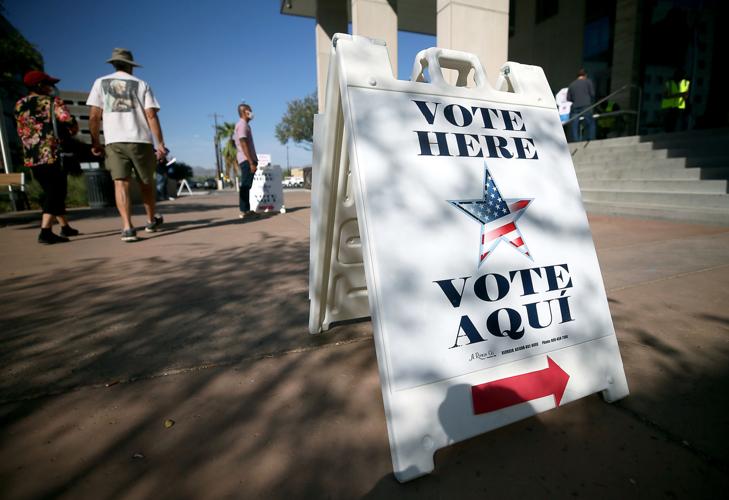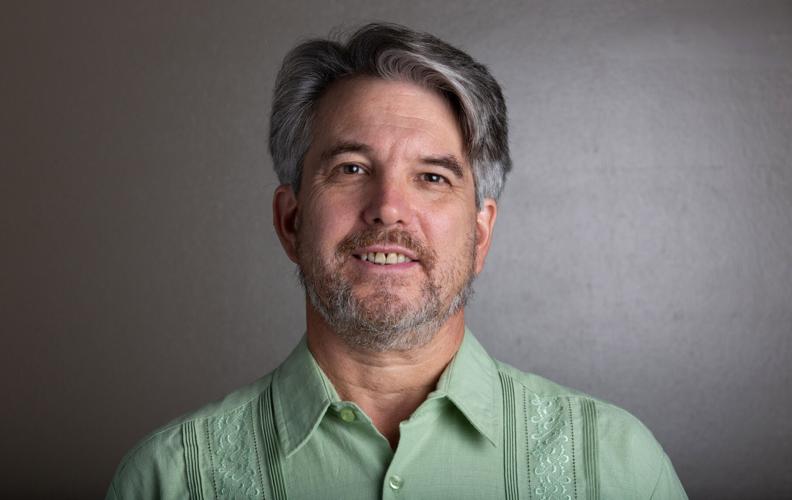In abstract, the turnout figures from last week’s city election look pretty bad.
Out of 284,181 registered voters in Tucson, only 90,138 voted. That’s a turnout rate of 31.72% for an election that chose three City Council members and decided two ballot issues. Pretty poor, right?
In context, actually no. That figure is OK — it’s within Tucson’s usual range for non-mayoral elections, and better than or equivalent to some other cities with odd-year elections.
Albuquerque, for example, had a hotly contested mayoral race that ended last week and still had about the same turnout as ours — 32.53%. Albuquerque City Clerk Ethan Watson even said he was “thrilled by the historic turnout for this election.”
But the question is — do we still want to accept this context and these low turnout figures? Because, as a city we have some control over turnout and have chosen to run elections in a way that keeps it low.
The context is, we run our elections differently than the rest of the state. And we’ve vigorously and victoriously defended our right to keep doing things differently, against repeated state efforts to force us to change.
Our biggest electoral quirks:
We have partisan elections, meaning the top Democrat runs against the top Republican and the top third-party candidates in the general elections. Other cities have nonpartisan elections.
We have citywide general elections, meaning everyone in the city gets to vote on the candidates from every ward, though the candidates are chosen only by the ward’s voters in the primary election.
We vote in odd-numbered years.
This last quirk is one the state Legislature has tried to force us out of twice in the last decade. Specifically, Sen. J.D. Mesnard authored a bill forcing cities to hold even-year elections if their turnout was 25 percentage points or more lower than in the two prior elections.
In court, the Arizona Attorney General’s Office argued that the state’s interest in voter turnout allows it to dictate when city elections are held. But in April, the state Supreme Court ruled against that, confirming that Tucson and other charter cities have the right to run their elections as they see fit.
So the decision remains ours. Yet we’ve decided repeatedly to maintain a system that tends to benefit the controlling majority.
Partisan elections tend to benefit the majority party — in Tucson’s case, Democrats. Ward-only elections also benefit the partisan majority, which can outvote partisan minorities even in wards where the minority is concentrated. And off-year elections limit the electorate.
“Anyone, in theory, could take advantage of that sort of low turnout,” Maresa Strano of the New America think tank told me.
“Influential interests at the local level benefit most,” added Strano, a policy analyst in political reform. “They know they have a narrow slice of the electorate they need to focus on.”
I understand there are good arguments in favor of off-year elections. As a member of a news organization, I know it’s hard to cover everything that is on the ballot in an even-numbered year, especially in a presidential election year like 2020. Adding city elections would just make it harder to cover in an even year.
In an odd year, the conversation is nicely focused on the city election.
And as a voter, I know that those even-year ballots can become completely unwieldy. The 2020 ballot included races for:
U.S. president
U.S. Senate
U.S. House
State Senate
State House (two seats)
Arizona Corporation Commission (three seats)
Pima County Board of Supervisors
Pima County attorney
Pima County recorder
Pima County assessor
Pima County sheriff
Pima County superintendent of public instruction
Pima County constable
Pima Community College Board of Governors
Arizona Proposition 207
Arizona Proposition 208
Arizona Supreme Court justices — retention election
Arizona Appeals Court justice — retention election
16 Pima County Superior Court judge retention elections
School board seats in many local districts
About 80% of Tucson voters turned out for that election, but come on. It would be a bad idea to tack city elections onto a ballot like that.
And in 2018, Tucson voters rejected precisely this idea. Prop. 408 would have changed the city election to an even-year system, putting the mayor and council up for election in 2020. City voters turned down that idea by a 58-42 margin.
That was a smart choice, but it wasn’t really our best option. The midterm election, when the governor and other state officials are chosen, would be a better alternative than the one voters considered and rejected. In 2018, Tucson’s turnout was 67%.
Bonnie Poulos, who chaired Tucson’s charter review committee that closed shop at the end of 2016, told me she favored moving all mayor and council elections to the midterm years.
“The committee in the end recommended that the city maintain the current election system,” she said. “However, if they were sued and had to go to the ward-only elections, we recommended that they hold city elections in the general election two years after the presidential.”
“I think it would encourage good turnout,” she said. “In the elections for City Council or mayor, we should have 50% or more.”
We really should. And now that we’ve established our rightful control over our elections, we should consider changing them ourselves.





